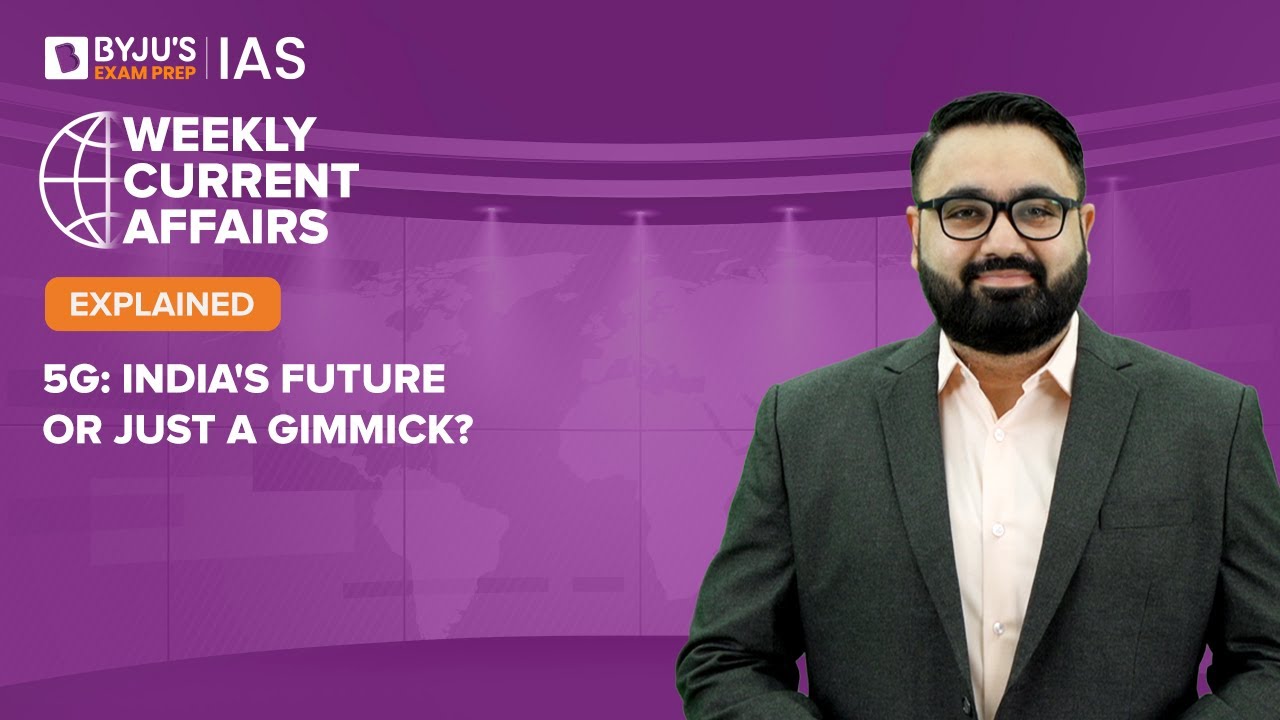South Korea is the first country to adopt the 5G network on 3rd April 2019. However, US company Verizon disputed the claims of South Korea. On the same day, the 5G network was launched in the USA by Verizon. The Philippines was the first country in South East Asia to roll out a 5G network. The world’s largest 5G network is in China.
In this article, we shall discuss at length about 5G and its function and purpose. This is an important topic for candidates preparing for the upcoming IAS Exam and other government exams.
To know the Difference between 4G and 5G, candidates can visit the linked article.
Aspirants must also refer to the related links given below, in line with the UPSC Syllabus:
| 5G – The Road Ahead: RSTV – Big Picture | Digital Divide in India |
| What is 4G? | What is the Internet and its Uses? |
Relevant Video – India and 5G

What will 5G do?
- Improve broadband connectivity.
- Autonomous vehicles – 5G will help in faster communication between vehicles on the road.
- Improve public infrastructure and safety – Cities will be able to function efficiently, it will improve the surveillance, sensors will be able to notify the public works department when the streetlights stop functioning when the drains flood, utility companies can track usage remotely.
- Remote control of Machinery – Heavy machinery can be remotely controlled from anywhere in the world, reducing the risks involved in working in hazardous environments.
- Healthcare – Surgeries can be carried out remotely.
What is 5G?
5G is the generation next in mobile broadband. It will eventually replace the current 4G LTE mobile broadband connection.
- Exponentially faster download
- Higher upload speeds
- Latency will decrease drastically. (Latency is the time taken by wireless devices to communicate with a wireless network).
5G operates on 3 different spectrum bands.
- Low-band spectrum – It offers great coverage area and wall penetration. Lower speed compared to other spectrum bands is its disadvantage.
- Mid-band spectrum – The advantage it provides over the low-band spectrum is, it provides faster speed and lower latency. However, building penetration is lower than Low-band spectrum.
- High-band spectrum – It offers the highest speed, but the coverage area and building penetration are greatly compromised compared to other spectrums.
| Kickstart your UPSC preparation now and ace the upcoming civil services exam. Refer to the links given below: |
Who invented 5G?
Research and Development on the 5G network were done with great vigour in many countries like US, UK, South Korea, China, and Japan.
Aspirants can find detailed information on this topic by visiting our Gist of RSTV page on 5G Network in India
The above points would help candidates preparing for UPSC 2022.
Related Links
| IAS Salary | IAS Eligibility |
| Civil Service Exam | Static GK |
| Government Exams | UPSC Syllabus |

Comments